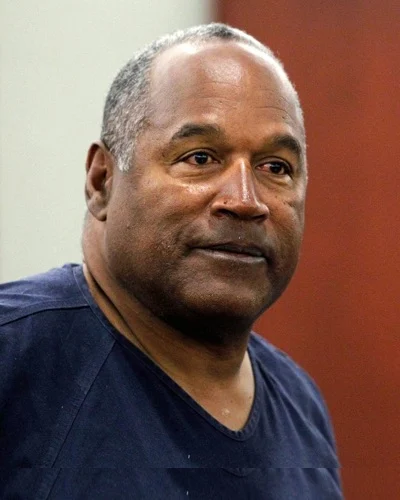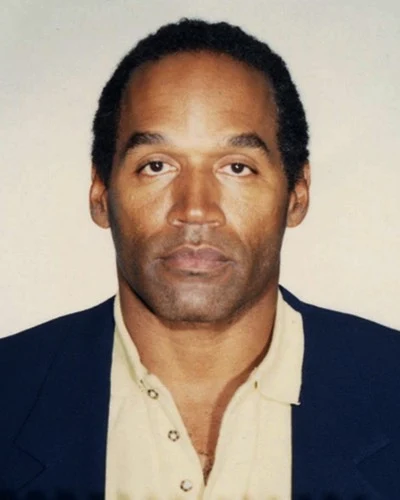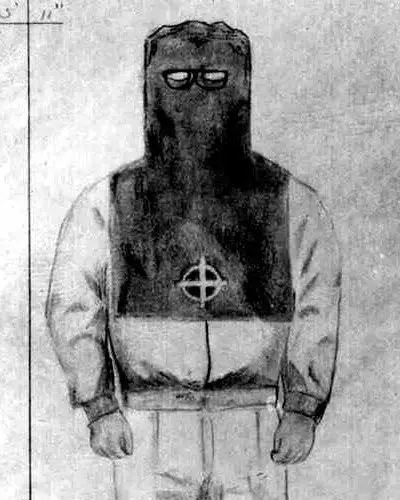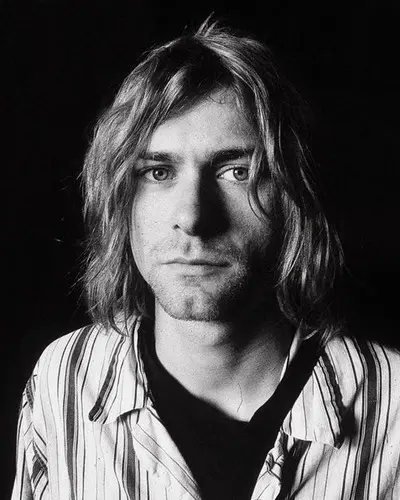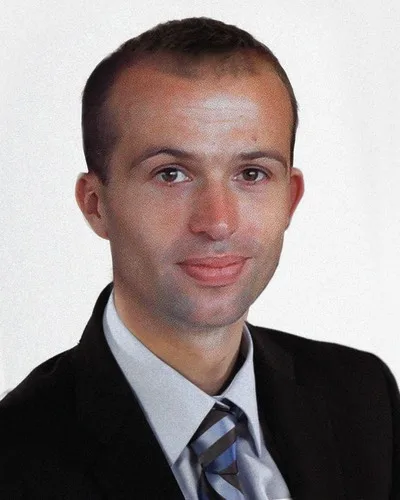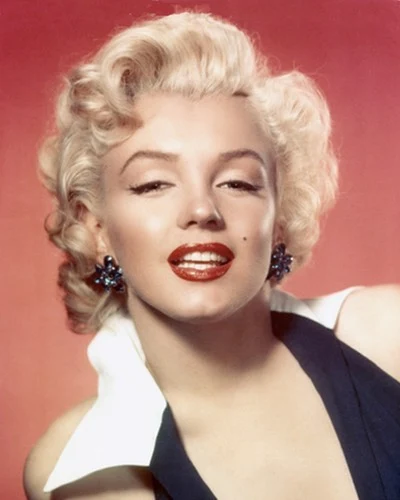The Dream is over.
Those words, written by John Lennon in his iconic 1970 song 'God' are often credited with ending the 1960s. But for many the idealism of that decade really died in brutal and bloody fashion in Los Angeles the previous year.
In late Summer 1969, a set of grisly mass murders committed on consecutive nights would shock Hollywood with their ferocity. Although seven people in all were killed, the press and public focused on the death of the heavily pregnant Sharon Tate, an up and coming film actress who had recently married famous Polish film director Roman Polanski.
The first murders occurred in the early hours of August 9th at Polanski's house on Cielo Drive in Benedict Canyon, an upscale area of Los Angeles popular with musicians and actors. Even by the violent standards of the era, the killings were shocking.
Sharon Tate, men's hair stylist Jay Sebring, coffee heiress Abigail Folger, her boyfriend Wojciech Frykowski and student Steve Parent had all been slaughtered, their bloodied and beaten bodies scattered around the house and gardens. Those responsible for the carnage had written the word 'Pig' in blood on the property's front door.
The following night, 10 miles away in a suburban area of Los Feliz, two more people were butchered. Supermarket executive Leno LaBianca and his wife Rosemary, a dress shop co-owner, were bound and brutally stabbed to death by home invaders. The killers left behind the words "Rise", "Death to pigs" and "Healter Skelter" in their victim's blood.
Police initially believed the murders at Cielo drive were the result of a drug transaction that had gone wrong - “Narcotics aspects are under investigation,” one officer was quoted as saying in the press. Suggestions that the killings were linked to the similar Labianca murders the following night, despite both crime scenes featuring inflammatory messages written in the victim's blood, were dismissed.
The narcotics angle seemed logical considering the huge spike in violent crime that accompanied the explosion of drug use during the 1960s. Just weeks earlier, music teacher Gary Hinman was murdered in a dispute over a drug deal. Involved in that crime were a group that would soon become centre-stage - Charles Manson and his followers, dubbed 'The Manson Family'.
Hinman was held hostage for three days by Manson member and budding musician Bobby Beausoleil for unpaid drug debts, during which Manson dropped by and cut part of Hinman's ear off with a cutlass. Beausoleil and another Manson follower named Susan Atkins eventually stabbed Hinman to death and wrote "Political piggy" on the walls in his blood.
Despite the obvious fact this crime was related in style to the recent carnage at Cielo Drive, police did not, either deliberately or due to a failure of intelligence, make any connection.
Meanwhile, amidst much sensational and lurid media coverage, wild rumours began to spread. These were heady and strange times in Hollywood, drug use and violence were rife and all manner of crackpots, cults, biker gangs, mobsters and even Satanists were connected by the press to the murders.
One group not suspected was an informal commune of hippies, dropouts, petty criminals and drug addicts who were ensconced at an old movie set in Death Valley called Spahn Ranch. Although a whole group of them were arrested shortly after the murders on suspicion of auto theft, they were subsequently let go without charge due to a legal problem with the arrest warrants.
One of those arrested and released was Charles Manson, a lifetime hoodlum and budding musician who had been hovering around the periphery of the Hollywood music scene since he was released on parole the year before. Manson had befriended such luminaries as Dennis Wilson of the Beach Boys and Neil Young, both of whom felt the eccentric Manson had promise as a musician.
The police investigation into the Tate-Labianca murders had begun to go cold when, in November, they made a crucial breakthrough. Susan Atkins, in jail for the murder of Gary Hinman, began to admit to various prison cellmates of her and other Spahn Ranch residents responsibility for the Tate and Labianca killings.
Tex Watson, Patricia Krenwkeel, and Linda Kasabian were subsequently arrested on suspicion of involvement in the murders. But it was Manson himself, now in custody for the auto-theft charges he had previously evaded, who would soon become central to the case.
Susan Atkins was initially offered immunity to testify against Manson and the other accused murderers but was regarded as so crazy and unstable as to be a liability to the case. It would ultimately be Linda Kasabian, who says she assisted but did not directly participate in the murders, who would be offered immunity to testify against her cohorts.
After months of pretrial wranglings the trial started in earnest in July 1970. Whilst the Los Angeles district attorney's office had acknowledged that others had committed the actual murders, prosecuting attorney Vincent Bugliosi wanted to portray Charles Manson as the mastermind of the killings.
Described by the melodramatic Bugliosi as 'the trial of the century', a vast media circus quickly surrounded proceedings, much of it centered around the strange figure of Charles Manson. From almost complete obscurity, the often bewildered Manson soon found himself elevated to the status of a national bogeyman, a place in the American psyche he has continued to occupy for nearly 50 years.
Demonised in the press, Manson was portrayed as the nightmare of every middle-class parent. A kind of sinister pied piper figure brainwashing otherwise good kids into brutal acts of violence. In an extraordinary move, President Nixon would come out and publicly declare him guilty before the trial had even properly begun.
Defensive lawyers filed for a mistrial but were denied, as were their efforts to have the trial moved to a less prejudicial setting. The judge ruled that the publicity and media attention surrounding Manson was so huge that it would be hard to find an impartial jury anywhere in the country.
He looked doomed before the prosecution even set out their case. On the flimsiest of evidence, Manson would be portrayed as an evil cult leader who used his magnetic personality to hypnotise his followers into doing his devilish work. This scenario struck a chord with the jury and the public and has since become the widely accepted truth of the matter.
Bugliosi and his team still had a problem, however. Manson may have exerted enough psychological control over his followers to persuade them to murder for him, but what was the motive? The LA District attorney's office was keen to overlook the amount of illegal drugs found at the house, and there had been no discernable robbery, so why had Manson ordered the brutal murder of seven people?
It was here one of the most extraordinary prosecution theories in criminal history was born. Chiefly dreamt up by Vincent Bugliosi, the case against Manson would centre on his contention that he was a homicidal racist who ordered his followers to commit mass-murder in order to start an apocalyptic race war in America.
Crucially, as we shall subsequently see, those that died were thus portrayed as indiscriminate and unlucky victims, picked entirely at random to fulfill some crazed scheme of Manson's.
This plan, which Manson supposedly called 'Helter Skelter' was inspired by a bizarre mishmash of the New Testament Book of Revelation and lyrics from the Beatles’ 1968 double album 'The Beatles', which Manson twisted to become a message to rise up before the black man gained the upper hand.
After starting the race-war, Manson and his followers would eventually emerge in the aftermath as rulers of the world, with the remaining black population as their slaves. As outlandish as this may sound, the jury bought Bugliosi's theory and Manson and the murderers were all found guilty and subsequently sentenced to death.
These sentences were later commuted to life after California abolished the death penalty in 1972, and all of those convicted remain in prison to this day, unlikely ever to be released despite the periodic ritual of futile parole hearings.
In 1974, Bugliosi wrote a book about the trial titled 'Helter Skelter', which further reinforced this extraordinary scenario in the public mind. It went on to become the biggest selling true-crime book of all time.
But how much truth was there in Helter Skelter? Even some of Bugliosi's colleagues, like fellow prosecutor Aaron Stovitz, were skeptical about the bizarre theory.
Could the far less sensational explanation be that these were simply violent drug murders of the type that had become sadly all too common in the area? And was Manson a convenient scapegoat?
Evidence For
Helter Skelter
During the trial, Charles Manson was given a psychological evaluation by state psychologists and found to be entirely sane and rational. It was also discovered he had a higher than normal IQ and a sound grasp of legal procedure, enough that he was deemed capable of representing himself.
Yet according to Bugliosi's prosecution theory, this street-wise and wily ex-con devised a plan - Helter Skelter, that is mainly noted for its staggering inanity. Both the plan and, unfortunate pun aside, its execution were so absurd as to be laughable.
But Bugliosi's intense zeal to pursue Manson and to push his Helter Skelter theory seemed to override the widespread skepticism and objections of other prosecutors, the police, the judge, investigators and multiple other commentators on the case, all of whom expressed their doubt about a notion even Bugliosi would occasionally describe as ridiculous.
Bugliosi's Helter Skelter theory contended that Manson, inspired by his twisted reading of lyrics on the Beatles's White Album, came to believe a race war - 'Helter Skelter' was imminent. Supposedly spurred on by his vicious racism he wanted to precipitate the war between white and blacks so he could emerge afterward as the leader of the remaining black population.
Already, this seems too strange to actually be the plan of someone who was not seriously mentally disturbed, which Manson certainly wasn't. But how they were to provoke Helter Skelter is even more unbelievable.
According to Bugliosi, Manson would order his followers, who were under his hypnotic spell, to go out and murder some rich white people in such a way as it would be blamed on the black population. To this end, he sent Tex Watson, Susan Atkins, Linda Kasabian and Patricia Krenwinkel out into Beverly Hills to enact his evil plot.
In the early hours of August 9th, they happened upon Sharon Tate's house, slaughtered everyone inside and then wrote the word 'pig' on the door in Tate's blood. This masterstroke would make it appear the crimes had been committed by blacks, thus starting Manson's race war.
An obvious problem with this plan is the word pig was not used exclusively by, or associated with, the black population. In actual fact it was old English slang for police, adopted predominantly by the white middle-class anti-establishment movement of the 1960s. The idea the police would infer the use of the word meant the perpetrators were black is an enormous stretch of imagination.
Since everyone involved with the murders that night were white and middle class, it's fairly obviously they would have known this. Perhaps Manson himself realized how weak his plan was, as according to Bugliosi the next night he ordered more murders, again with the intention to make it appear they had been committed by blacks.
On August 10th, Tex Watson, Linda Kasabian, Susan Atkins, Steve Grogan and Leslie Van Houten again took to the streets of Los Angeles looking for more victims. Although joined initially by Manson, he would leave before anybody was killed. Happening at the home of Leno and Rosemary LaBianca at 3301 Waverly Drive, a similar tale of bloody murder unfolded inside and more inflammatory slogans were written in blood on the walls.
According to Linda Kasabian the idea this time was to take LaBianca's wallet and leave it in a black area of town. Manson's diabolical intention was that a black man would find the wallet, use the credit cards and subsequently be blamed for the murders.
To this end, Kasabian hid the wallet inside a cistern at a gas station hotel, in a predominately white area of town, where it wouldn't be found for another 4 months. Evidently, leaving a wallet in a cistern is not a serious attempt to start a race-war, so whatever the gang were up to that night it appeared to bear little relation to the notion of Helter Skelter.
In practice, Bugliosi's explanation for the actions of the murderers over the two nights make no sense and look for all the world like a far-fetched prosecutorial concoction created after the fact, designed to implicate somebody who was not even present - Charles Manson, in the killings.
Much of his evidence comes from Linda Kasabian, more directly involved in the murders themselves than Manson but offered immunity to testify against him. It was in her self-interest to tell Bugliosi what he wanted to hear however absurd it sounded outside of the courtroom.
When Tex Watson, the ring leader on both nights of carnage and the man who actually committed the murders, heard about the Helter Skelter plot been pushed by the prosecution and Manson's alleged hypnotic powers, he was heard to say - "Charlie! Fuck man, no way!".
Watson's involvement was almost the most absurd part of Bugliosi's entire case. Whereas it's not too hard to see how the charismatic older Manson might be able to persuade impressionable young girls to do his bidding, the idea that Tex Watson - a tall, good-looking and well-educated alpha male type could be so comprehensively manipulated seems particularly unlikely.
Watson was never part of the inside circle around Manson and actually spent little time at the Spahn ranch, preferring to hang out in LA and develop his drug dealing career. Whilst superficially charming and charismatic, Watson was a violent psychopath and not the kind of man to be pushed around by anyone, least of all the much shorter Manson.
He also had form, having ripped off black drug dealer Bernard Crowe a few months earlier, and tied up and robbed Mafia-connected drug dealer Joel Roseau and his girlfriend the previous month. Watson's behaviour indicated he was following his own criminal path, rather than Manson's hypnotic will, and probably regarded the wily old-con more as useful ally than master.
So his initial incredulity at being informed he was actually under Manson's evil, cult-like spell was well placed. In reality, a far more convincing reason for Watson and the other members of the so-called 'family' to blame it all on Manson was to try and save their own skin.
"I was convicted of witchcraft in the Twentieth Century"
If Watson could make it look like he had been brainwashed into committing the murders and he was otherwise a good Christian boy, then he might just escape the inevitable death sentence coming to someone who had brutally murdered seven people in cold blood.
Clearly the testimony of these murders was self-serving and unreliable as genuine evidence, either against Manson or regarding any aspect of the case. But it is not a prosecutor's job to find the truth, only to persuade a jury, and Bugliosi's courtroom flair managed to do exactly that.
He was helped in no small part by the prejudiced media reporting surrounding the trial that gave Manson little or no chance of a fair hearing. Furthermore, as his position looked increasingly doomed, Manson himself seemed determined to give the public what they wanted, playing up to the fantasy of the evil cult leader in a series of increasingly eccentric courtroom appearances.
But the craziness was a showman's act, Manson was perfectly aware he was been railroaded by the ambitious prosecutor - "I was convicted of witchcraft in the Twentieth Century and my case made the prosecutor, Vincent Bugliosi, filthy rich behind the book and the film he wrote."
Indeed, Bugliosi became world famous off the back of the case, and would frequently refer to the fact he was the man who 'prosecuted Charles Manson' when promoting his books or political ambitions.
Despite building an entire career off the back of the Manson trial, Bugliosi's achievement boiled down to convincing 12 people that Manson had sufficient quasi-mystical abilities to convince others to commit brutal murder for him. In other words, witchcraft in the 20th century.
The Drugs Connection
For many, the way the police initially concentrated on the "narcotic aspects" of the case has always pointed towards a more credible explanation for the murders than Helter Skelter.
Drugs are everywhere in the story, a fact which Vincent Bugliosi and the Los Angeles district attorney's office were scrupulous in trying to downplay at the trial.
Many theorists, including author Nikolas Schreck in his mammoth tome on the case 'The Manson File' believe the Cielo drive murders were a drug burn, Tex Watson's thuggish attempt to muscle in on a big drug deal occurring at the property that turned into a brutal murder spree.
There are good reasons to suspect that the Tate murders were drug related. The drug burn murder of Gary Hinman by several of the Spahn ranch regulars was clearly related to the Tate-Labianca killings, not only because of the overlap in the perpetrators, but also the distinctive common factor of political messages scrawled on the walls in the victim's blood.
The failure of prosecutors to link the crimes could charitably be described as incompetence, but seems far more likely to be a deliberate oversight in order to ensure the drug angle in the high profile Tate murders was not pursued.
The purpose of this is not hard to discern, and one does not have to propose any kind of orchestrated conspiracy. Simply that the establishment in LA instinctively wanted to prevent the dark underbelly of its most important export - Hollywood itself, been exposed to the world.
Because underneath the glitter of Tinseltown lay an open secret, since its early days the fantasies of Hollywood have been built on the seedy foundation of illegal drugs and mob money, with all the brutal violence that inevitably follows.
According to Schreck's research in the Manson file, what transpired at Cielo drive in the early hours of August 9th 1969 was the bloody consequences of a turf war between ambitious small-time drug dealer Tex Watson and established suppliers Wojciech Frykowski and Jay Sebring over the lucrative Hollywood drug scene.
Sebring and Frykowski have both been named by several authors over the years as suppliers of narcotics to actors and musicians in Hollywood. A loose-knit network of stars that included such names as Mama Cass and Steve McQueen, as well as Polanski and Tate, whose house at Cielo Drive appeared to be a base for some of the dealing.
Peripherally involved in this network were Manson and his followers. In his autobiography, Michael Caine recalls meeting Sharon Tate and Jay Sebring at a party held by Mama Cass. Caine also recalls how Charles Manson and 'some girls' were also at the party, indicating the obvious possibility that Manson and his followers were already known to Sebring and Tate.
Both the FBI and the LA Police had evidence for drug dealing at Polanski's property. An FBI report dated 19 August refers to the possibility and police reports after the murders suggest a variety of different drugs were found in Jay Sebring's black Porsche parked near the house.
The police's second homicide report into the Tate murders also quotes Sebring receptionist Karlene Anne McCaffrey about how Mafia drug dealer Joel Rostau had visited the property on the night of the murders to deal drugs with Sebring and Frykowski.
"Rostau informed McCaffrey that he had delivered cocaine and mescaline to the house but that Frykowski and Sebring wanted some additional narcotics and that he had gone back down the hill but was unable to locate the other narcotics they requested and therefore he did not return to the Tate residence."
The report continues - "McCaffrey stated that on August 7, 1969, she had talked to Sebring and he had informed her that he had been burnt on $2,000 worth of bad cocaine. McCaffrey stated that in her opinion Sebring would do almost anything to get back at the person who had burnt him."
In his book Family, author Ed Sanders details Sebring's violent reprisal against the supplier of the cocaine. "A large party was held on Cielo Drive at which Billy Doyle...was whipped as the result of a dope burn involving about $2K worth of cocaine which was perpetrated on Jay Sebring, who was present at the affair".
This incident makes it clear the dealings at Cielo drive had already begun to spiral into violence. With Tex Watson also operating in the same area, had a dispute over territory or a bad deal lead to the murders?
Although important to be suspicious of all the testimony of the Manson group after the murders, some of it does point to a drug burn. At the penalty phase of the trial, Susan Atkins would state that Linda Kasabian "told me to get a knife and a change of clothes…she said these people in Beverly Hills had burned her for $1,000 for some new drug, MDA."
That the murders were the result of a drug dispute is clearly a credible scenario when placed in the context of the previous violent behavior of those involved, the Beausoleil murder and the amount of drugs that crop up repeatedly in the story. But how do the events of the next night fit into the theory?
The set of murders at the Labianca household on August 10th are also connected to this drug war by Schreck, although the links are weaker. It does seem a fair possibility Tex Watson, Jay Sebring and Rosemary Labianca may have previously known each other as they were all involved in the LA wig trade.
More importantly, Joe Dorgan, the man who found Leno and Rosemary's bodies, was the boyfriend of Rosemary's daughter. Dorgan was a member of the Straight Satans, the biker gang that frequented the Spahn ranch and had many dealings with both Manson and Watson.
The Satans were the supposed reason Manson follower Bobby Beausoleil ending up killing Gary Hinman, as a batch of bad drugs he had obtained from Hinman had made several Satans members sick.
The Manson File also implicates Rosemary Labianca herself in this nexus of drug dealing, using her wig shop as a front. Labianca was far wealthier than her and her husband's straight business dealings would justify, leading to persistent rumors she was involved in drug dealing.
This claim would be a crucial connecting factor in the whole theory if true. It would increase the likelihood that Rosemary had had some dealings, and possible clashes, with Tex Watson and the other Manson family members prior to the murders.
These links would contradict the whole premise of Bugliosi's Helter Skelter scenario - that the killings were random acts of violence purely committed to incite a race war.
Instead, could it be that the Labiancas, like the residents of Cielo drive, were actually killed as part of a struggle for dominance in the low-level drug underworld of late 60s LA? And was the fantastical Helter Skelter narrative merely a Hollywood-style fantasy to hide the dark reality of what was really going on in Tinsel Town?
Evidence Against
Motives
One of the most prominent proponents of the drug burn theory is author Nikolas Schreck, whose book The Manson File is a major work on the case. Schreck, who got to know Charles Manson very well during the writing of the book, compiled his work from years of research on the ground in LA and dozens of interviews with direct participants in the case.
However, some of his evidence and conclusions have been questioned by other authors. Schreck relies heavily on unnamed witnesses - the author says they would only talk on condition of anonymity. Clearly, that makes validation of his claims difficult.
In particularly his claim that Rosemary Labianca dealt drugs, which provides a significant link between her and the murderers, stems solely from Schreck's anonymous sources. Other authors have also suggested Labianca was dealing, but the suggestion remains nothing more than a rumor with little hard evidence to back it up.
Despite many lurid details about the Labianca's activities and proclivities appearing in police reports, it's never mentioned anywhere that they made money from illegal narcotics.
The thinness of this part of the theory is troubling. If Rosemary Labianca didn't deal drugs, then there would be little motive for Tex Watson to eliminate her from his turf.
This is a potentially killer blow to the whole drug burn theory. If there was no drugs motive in the Labianca murder, then it would strongly suggest there wasn't in the Tate murders at Cielo drive either. The two crimes are so intimately connected in both style and personnel that it seems unlikely there was not a common purpose behind them.
However, it's possible a combination of motives were at play. As described earlier, Tex Watson never seemed the kind of man to be a follower. It could be that the more calculating Watson gatecrashed some vague notion of Helter Skelter Manson was spouting out at Spahn ranch in order to further his own agenda to assert control over small-scale drug dealing in the area.
But the Labianca murders remain difficult to explain as part of that narrative. If Watson was serious about taking control of the drugs trade in the area, would he really involve himself in a completely unrelated home invasion and slaughter the night after eliminating his main rivals?
Testimony
Members of the Manson family have all given statements that support Vincent Bugliosi's Helter Skelter theory of the murders. Whilst not exactly consistent, or even particularly reliable or trustworthy, Tex Watson, Susan Atkins, Linda Kasabian and the others involved in the murders have generally tended towards the official prosecution story.
Watson has repeatedly stated how Manson gathered the group together on the day of the murders and instructed him that "Now is the time for Helter Skelter". The others have given similar accounts.
At the trial Linda Kasabian, whilst granted immunity for her statements, gave a detailed account consistent with Tex Watson's. "We got about to the middle of the driveway, you know, and Charlie called us and told us to stop, and he came to the car to my side of the window, stuck his head in, and told us to leave a sign. He said, 'You girls know what I mean, something witchy,' and that was it."
"Now is the time for Helter Skelter"
Little or nothing said by the main players over the years really support the drug burn motive. Watson especially, the central figure in the drugs theory, has always disavowed it. Even now, secure in the knowledge he will never be released, he has not admitted to anything beyond the official narrative.
It would obviously be foolish to take anything said by these murderers at face value. For all those directly involved in the killings, it was in their self-interest to go along with the prosecution case. Attempting to absolve themselves of some of the blame by endorsing the Manson Helter Skelter motive was their slimmest hope of ever getting parole.
The only figure who has never wavered in rejecting Helter Skelter is Manson himself. Whatever garbage he has spouted over the years, he's always been relatively clear, by his standards, that Bugliosi's prosecution case bore no relation to anything he was involved in.
Other theories
Events as bloody and infamous as the Tate-Labianca murders and the incredible show trial of Manson were always going to attract alternative explanations.
Everything from devil worshipping rituals to a staged psyop have been suggested over the years. However, a more mundane interpretation of events is that the murders were simply the chaotic consequences of damaged, drug-addled petty criminals running out of control.
If one description best sums up Charles Manson, it's not cult-leader, but petty-criminal. He had spent most of his life in prison because of small-scale offenses - stealing cars, burglaries, fraud. In actual fact the reason Manson was first arrested after the murders was because he and his gang at Spahn ranch had been stealing cars.
The regulars at Spahn ranch were a ragtag group of dropouts, thieves, bikers and hippies, their common connection been they spent most of their time strung out on drugs and looking for their next criminal enterprise. Some of them may have bought into Manson's bizarre ramblings or simply hung out with him because he was an experienced criminal who was capable of smoothing things over when they got into trouble.
Either way, Manson and his associates at Spahn ranch were responsible for the murder of Gary Hinman, but even that looks more like a bungled extortion than premeditated murder. Despite the fatal ending, it worked and they got hold of Hinman's car - a mundane reason for a man's death but an example of the small-time level of Manson's thinking.
Manson's criminal mind may have come to see that sending in a bunch of crazy looking hippies waving knives might be a good way to scare his debtors into paying up.
Is this a credible explanation for what happened at Cielo Drive? There is reason to believe that Manson felt a former resident of the property - Doris Day's son and record producer Terry Melcher, owed him money or at least held a grudge against him for reneging on a record deal he believed he was promised.
Could Manson, thinking Melcher still lived at the house, have sent some of his followers in to try and scare him into paying up?
Bugliosi tried to downplay it during the trial, but at least 2 of the killers that night were already high on drugs when they entered the property. This combined with Tex Watson's undoubted psychopathy could have caused the party to freak out when confronted not by Melcher, but a house full of frightened strangers.
Whilst obviously speculation, it's not hard to see how such a scenario might have quickly escalated from a violent fight into murder. But is this really sufficient to account for the sheer level of brutality evident in the crime scene? That might seem a stretch, but is it any more of a stretch than the same perpetrators committing the same crime because of some crazy notion of Helter Skelter?
Susan Atkins, who was present at the Hinman crime scene where 'political piggy' was written on the wall in blood, may also have even written 'pig' at Cielo drive as part of some warped and kooky attempt to make it look like Bobby Beausoleil was innocent of the Hinman murder.
Conclusion
Amidst this miasma, only three things are really certain. The first is we'll never get any sense out of Charles Manson himself. Only he truly knows whether Helter Skelter was real but his bizarre mindset, impenetrable patois and ever changing stories make him a bewildering figure to try and understand.
Secondly, this makes him a terrific scapegoat, one that continues to fascinate and appall in equal measure nearly 50 years on.
Thirdly, whether dreamt up by a crazed cult leader or an ambitious prosecutor, Helter Skelter remains one of the strangest and most troubling chapters in the whole of 20th century crime.
Were the Tate-LaBianca murders attributed to Charles Manson actually the results of a drug burn? - add your comment below
















